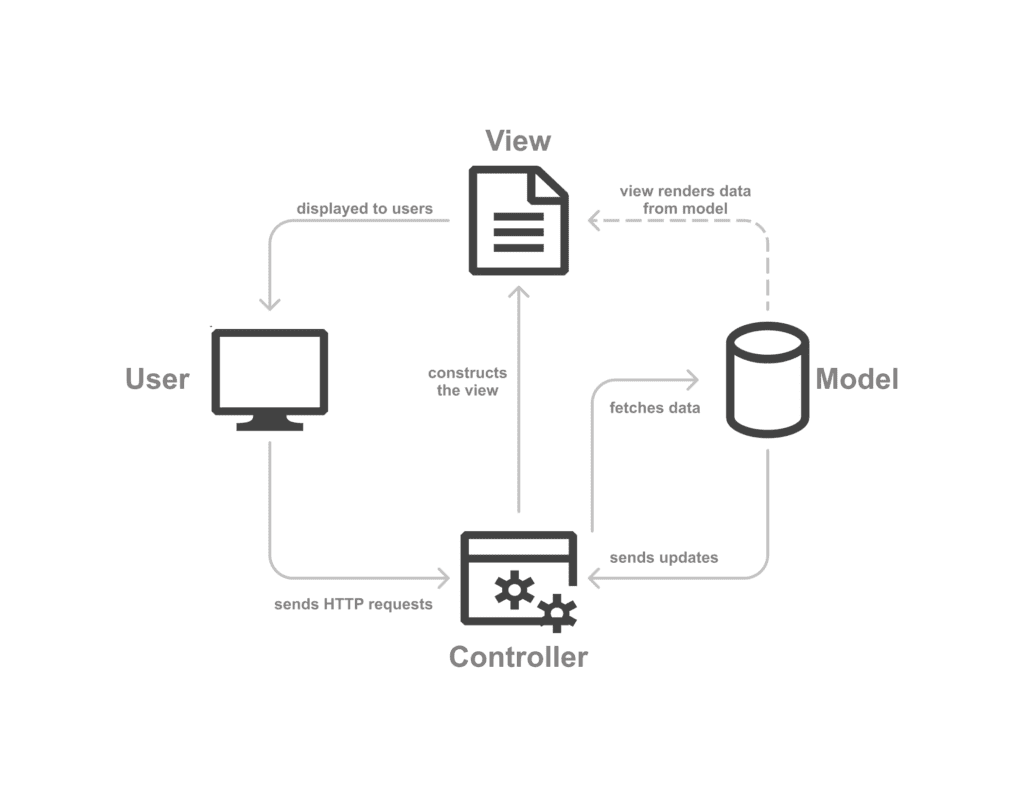TL;DR
- Laravel is a PHP backend framework using MVC and Blade for structured, secure apps
- It includes ORM, Artisan CLI, testing, migrations, and Composer packages for fast delivery
- Built-in CSRF, Monolog logging, and a strong community aid production readiness
- Flatlogic can generate a Laravel CRUD app in minutes with DB models, admin panel, and API
Fact Box
- PHP 8 (2020) introduced JIT compilation Source
- Laravel follows MVC; routes begin in web.php and views use Blade templates
- Laravel provides ORM, a CLI (Artisan), testing, migrations, and modular packaging
- Laravel includes CSRF protection for security
- Flatlogic Platform scaffolds a Laravel CRUD app in minutes with DB models, admin panel, and API Source
Introduction
Laravel is a PHP (Hypertext Preprocessor) backend development framework. With it, you can build an application in a short time with well-structured code. Laravel offers a high level of security for the user and allows you to easily add new features in the future. In addition, its numerous packages of functionalities can give your application the features required to provide high-quality services to your clients or to run your internal processes efficiently. A strong command line and easy-to-use features are just some of the many examples. There are a variety of plugins with specific functions for Laravel. All of them help in simplifying and speeding up web application development.
PHP is an open-source general-purpose scripting language with weak dynamic typing. It handles multitasking, including HTML routing and templates, as well as authentication, which is often the hard part to build. Weak dynamic typing means that PHP automatically performs a lot of implicit conversions, even if there may be a loss of accuracy or the conversion is ambiguous. In version 8 of PHP, released in 2020, there is a JIT (Just-In-Time) Compilation, which sped up the work of PHP multiple times.
How does it work?
MVC (Model-View-Controller) is an architectural template for Laravel. MVC divides your software into three parts: data (Model), an interface to view and modify data (View), and operations you can perform on the data (Controller).

Structuring your application in the MVC manner is useful because you can divide everything into logical areas. This lets you structure your code, make it more flexible, less fragile, and easier to debug. MVC uses the blade templating engine to break down the HTML and control the control block. Everything starts with routes set up by web.php, which handles HTTP requests based on the requested location.
Importance of Laravel
Laravel has features such as ORM, a command-line interface (CLI), automatic testing, a portable virtual programming environment, and modular packaging with support for dependency management, so you can build new features in your applications without starting from scratch in a snap. Laravel enables you to build custom packages for code you use frequently. Alternatively, you can use Composer to install out-of-the-box packages, or Artisan – a built-in tool that includes several utilities to speed up the development process. Plus, you’ll find everything in Laravel, from database migration to cloud storage, that you can’t get from any other PHP framework. 
Why use Laravel?
Here’s a list of some top features of Laravel:
- User-friendly code. Laravel has a variety of available tools, templates, and libraries. This makes development tremendously flexible and user-friendly.
- Security. Laravel has built-in security functionality in the framework, which allows it to eliminate all kinds of online threats because it has CSRF tokens.
- ORM maps tables of the database as classes for rapid data manipulation and access.
- Unit Testing. The PHP framework features unit testing, which allows PHP developers to write unit tests in their code.
- No need to install new packages. The hired E-Commerce developer doesn’t need to install these packages. Laravel can install, after discovery, any package that fits the user’s exact needs. Web applications are aided by an automated process maintained by multiple programs. Information management is also simpler with the user’s Composer as a dependency manager.
- Migration of Database. The database migration feature simplifies swapping databases if necessary, saving a lot of time and making the process of building an application quick and easy.
- Configuration with an integrated library. The Logging Library Monologue supports a lot of important log handlers.
- Community. Laravel has its own community portal, where developers share their knowledge and experience working with it.
How to Create an App with Laravel Backend on Flatlogic Platform
Flatlogic Platform offers you the opportunity to create a CRUD application with the Laravel backend literally in a few minutes. As a result, you will get DataBase models, Laravel CRUD admin panel, and API.
Comments